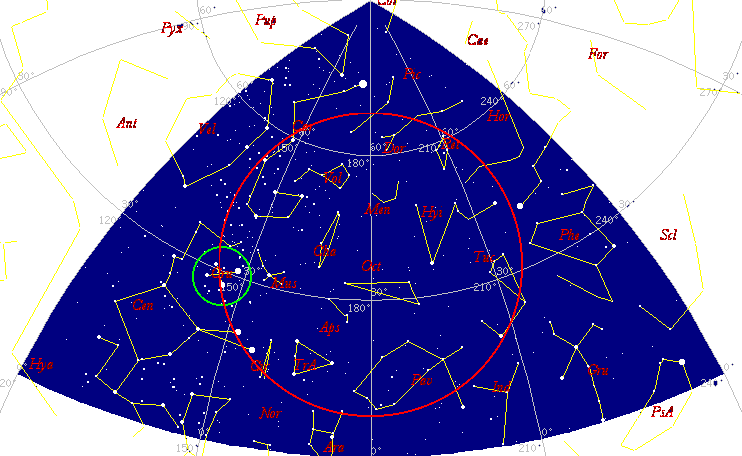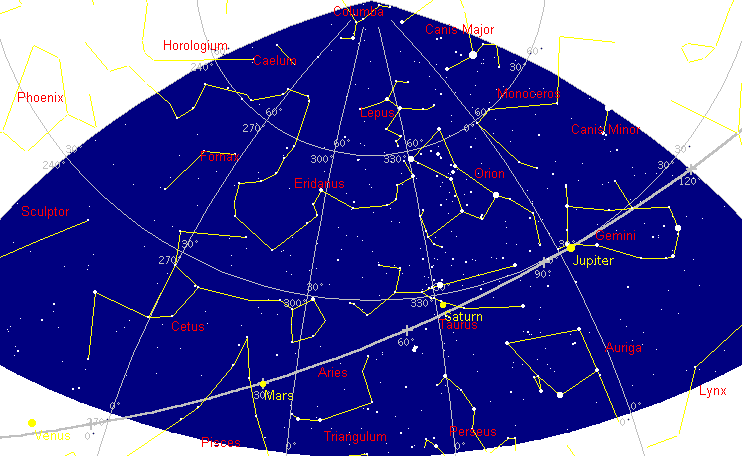 |
Stargazing Page |
 |
Stargazing Page |
|
Not everyone is crazy about the stars,
but almost everybody looks at the sky sometimes, and wonders what a particular
bright star or planet might be.
|

Auckland
Sky 2100 hrs 1 March 2002
The
curve at the bottom of the map is the horizon, and the Zenith (overhead)
is at the top.
Map
created with an evaluation version of Skymap. To download
your own copy of Skymap, click here.

Auckland
Sky 21 hrs 1 March 2002
The
curve at the bottom of the map is the horizon, and the Zenith (overhead)
is at the top.
Map
created with an evaluation version of Skymap. To download
your own copy of Skymap, click here.
[top]
|
There are no bright planets to see in the morning sky during March. Mercury rises just before the Sun later in the month, but is very hard to spot. |
|
|
|
|